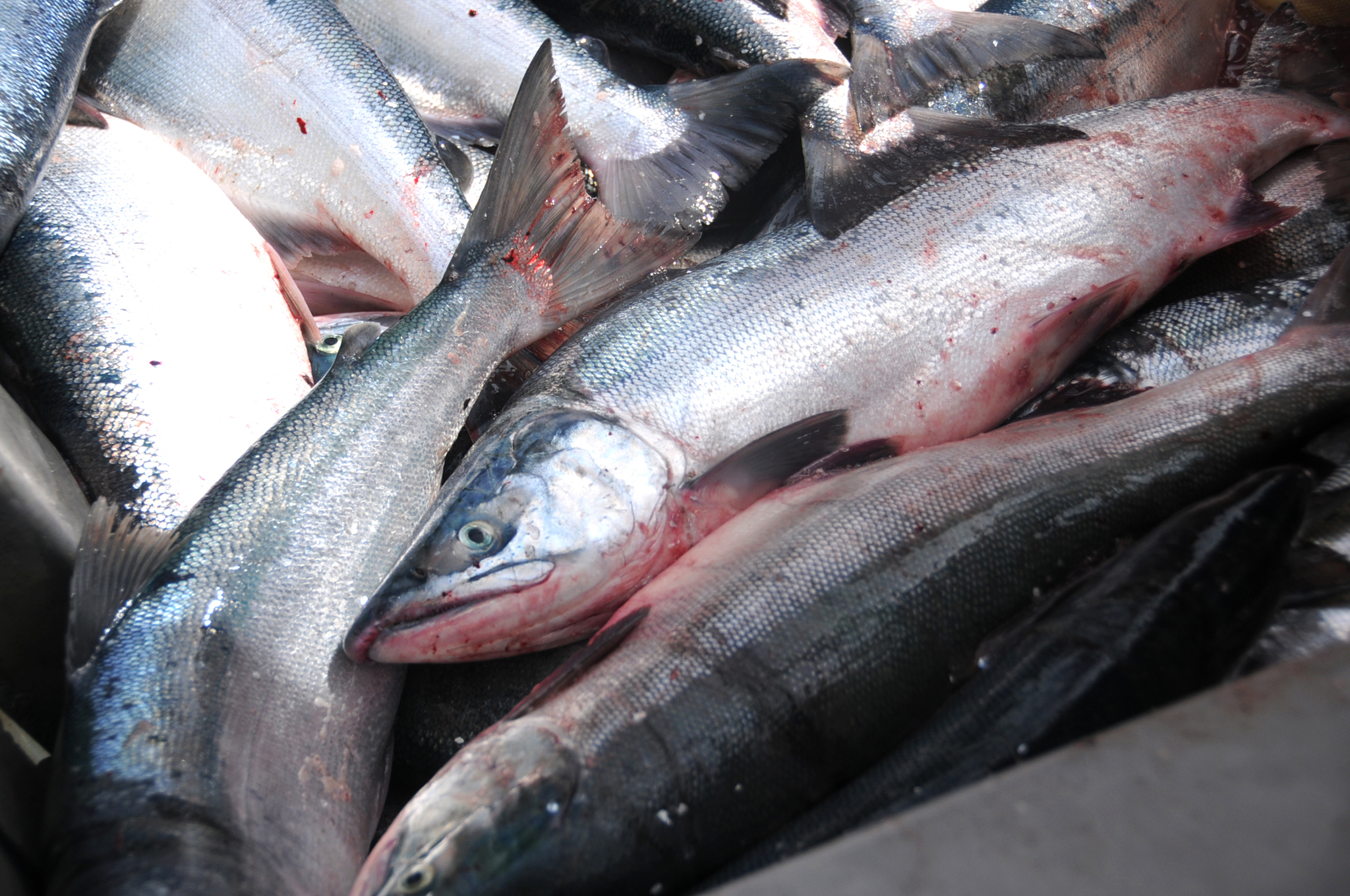New genetic data indicates that many of the sockeye harvested by Kodiak’s commercial fishery may originate from Cook Inlet streams.
The Alaska Department of Fish and Game published a study in December compiling three years of research into the genetics of sockeye salmon harvested by commercial fishermen in the Kodiak Management Area. In 2014, local Kodiak-origin stocks of sockeye salmon contributed 88 percent of the harvest, but in 2015 and 2016, they only contributed 58 percent of the harvest, according to the study.
Almost all the rest of the harvest was Cook Inlet-origin stocks. In 2014, 8 percent of the harvest turned out to be from Cook Inlet. In 2015, that portion was 37 percent, and in 2016 it was 30 percent, according to the study. Chignik-origin sockeye salmon comprised another 10 percent, according to the study.
Though the researchers sampled more than 45,000 fish, they were constrained by funding to specific areas. Thus, the results only characterize about half of the sockeye harvested in the whole management area in each year, according to the study — a little less than half in 2014 and a little more than half in 2015 and 2016.
The results may be limited because of the lack of complete sampling and because some of the Kodiak-area stocks were hard to distinguish genetically, the authors wrote in the study.
“Given the lack of complete harvest information due to incomplete sampling of the total harvest and inability to distinguish between major stocks, a formal comparison between traditional methods of run reconstruction on Kodiak … and MSA results rom this study will be challenging and necessarily rely on many assumptions,” the authors wrote.
Sockeye salmon are the largest fishery in both the Kodiak and the Cook Inlet areas by value, followed by pink salmon. Purse seiners, beach seiners and set gillnetters participate in the fishery, bringing in more than $36.4 million in 2015. Sockeye salmon in all fisheries comprised about 46.6 percent of the harvest between 1975 and 2015, according to a Commercial Fisheries Entry Commission report presented to the Board of Fisheries for the Kodiak area meeting, being held this Tuesday through Friday in Kodiak.
In Cook Inlet, sockeye salmon comprise a much larger portion of the harvest, averaging about 82.2 percent between 1975–2015, according to a Commercial Fisheries Entry Commission report provided to the Board of Fisheries for its Upper Cook Inlet meeting, scheduled for Feb. 26–March 8 in Anchorage. The Cook Inlet management area hosts commercial fisheries for purse seines, drift gillnets and set gillnets.
The Board of Fisheries heard updates from the researchers at its meeting in Kodiak on Tuesday. Birch Foster, a research biologist with the Division of Commercial Fisheries in Kodiak, told the board this was the first time a mixed stock analysis had ever been done in the Kodiak Management Area. Mixed stock analysis, a research method using genetic information from populations and mixture samples to estimate which stocks of fish are present in an area, has been used in other areas of Alaska since the 1980s.
Foster said some of the information managers had about stock presence in the area came from coded wire tag studies on fish stocks. When Board of Fisheries member Robert Ruffner asked whether the new data was surprising, Foster said it was not entirely unexpected.
“The level of surprise, of the amount of Cook Inlet or any nonlocal stock, maybe depends on what stakeholder you are or what your history is or where you fish,” he told the board. “On the other hand, we’ve always known that there’s nonlocal stocks that have been part of the management plans, and that’s from the tagging studies.”
Kyle Shedd, one of the coauthors on the genetics study and a geneticist with the Fish and Game Genetics Conservation Lab, said the results of the study shouldn’t be applied outside the years of the study and readers should remember that the samples don’t represent all the fish out there.
“Harvest does not necessarily equate presence,” he said. “… Fishing distribution is not random, and the locations within fishing areas in which sampling occurs may change from year to year.”
It’s not clear what the implications are for management yet, either. Pat Shields, the area management biologist for the Division of Commercial Fisheries in Cook Inlet, said there haven’t been any proposals changing management practices in reaction to the new genetic data for either the Kodiak meeting or for the Upper Cook Inlet meeting. A group could submit an emergency petition to the Board of Fisheries in response, but Shields said he wasn’t aware of any.
Because the data is so new, everyone is still trying to process it, he said.
“There’s been a recognition in the past that Cook Inlet fish are probably being harvested in some of the fisheries around Kodiak Island. We’ve never had this genetic stock identification data.”
Reach Elizabeth Earl at elizabeth.earl@peninsulaclarion.com.

